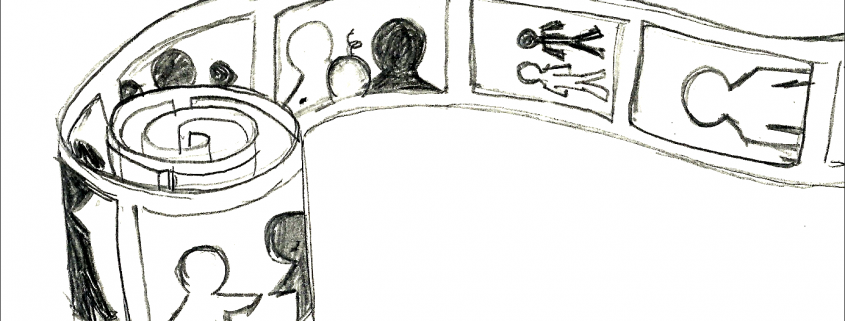Despite progress, Hollywood needs a shift
In a year so inescapably political, the films that closed out 2016 became the gust of fresh air the country needed. Startlingly sharp and notably innovative, the past year’s movies guided viewers through the deaths of beloved artists, the tumultuous circus of Donald Trump’s presidential transition and months and months of global violence. Compared to these real-life forces, movies can rightfully seem trivial and irrelevant. But as Americans move closer to a Trump presidency, the country is witnessing art take on its historical role as political protester. In 2017 and in the years to come, it is as important to enjoy the movies as it is to hold filmmakers accountable for recognizing and reshaping the societal contexts of their work.
A remarkable number of the films that emerged from 2016 were pulled from the fabric of real life: Jackie, Sully and Hacksaw Ridge are all based on real people; Moonlight, Manchester by the Sea and Hell or High Water attend to their portrayals of different American communities with painstaking, ingrained realism. As such, movies in the latter group deserve to be recognized as emblems of their times.
And indeed, some of these emblems did what movies should always do: gather the social issues surrounding them and move the discussion forward. Some others, though astonishing pieces of art in and of themselves, stretched cinematic and aesthetic boundaries but failed to root themselves in the context necessary for progressive political discourse.
Sure, movies are only movies. But when the Oscars roll in just a month after Trump’s inauguration, what will it mean if a movie about a white musician telling black musicians that only he knows true jazz (La La Land) wins Best Picture when a movie about a gay black man navigating love and trauma in Miami (Moonlight) does not? Does it mean that willful ignorance wins, again?
Not necessarily, and that would be an extreme view to take. But it is necessary to consider that movies play a role in how this country thinks about politics. Just recently, in the wake of “alt-right” white nationalists calling for a boycott on Rogue One: A Star Wars Story for its promotion of multiculturalism, it is more crucial than ever before to recognize that movies and politics share a common currency: identity.
And so continues the debate: defending and denigrating movies and pushing for and pulling away from on-screen diversity. Recently amid this dialogue, film scholar Mark Harris wrote a letter to Slate imploring audiences not to designate some movies (i.e. the indie breakout Moonlight) for “‘coastal elites’” and others (such as Hell or High Water) for “‘real America.’” This practice, he argues, would divide the country along the same lines plowed by the presidential election.
Harris has a fair point: Movies are supposed to unite people, not split them into factions. And in his appraisal of last year’s releases, he is correct that 2016 witnessed a number of surprisingly relevant films, including Hell or High Water for its depiction of the financially drained white working class and Moonlight for its exploration of black and queer themes. As a whole, Harris asserts that these movies reflect a sprawling America, even in its brokenness.
Despite advances in diversity, working-class white male characters led a great number of last year’s movies, as they have from the dawn of cinema. And yet perhaps because in 2016 this same demographic elected Trump to the presidency, movies like Paterson, Hell or High Water and Manchester by the Sea are suddenly accruing praise for their honest and complex portrayal of white men. In his letter, Harris even acknowledges the “racist jokes” said by a white character in Hell or High Water, but justifies the offenses by arguing that they stemmed from the “economic anxiety of white men in danger of displacement.”
Sure, a film like Hell or High Water depicts a real part of America. But it is also a portrait audiences have encountered over and over again. When will critics stop praising movies for being honest and instead applaud them for being brave and new? The assertion that a movie like Hell or High Water is important because of its authentic portrayal of rural white men is just a mask that justifies another generation of racist jokes.
For decades, films have been made about working-class white male farmers, cowboys, dreamers, fighters and underdogs — characters who, demographically and geographically, probably would have voted for Trump if they had lived in this election cycle. Nevertheless, as the last year proved, it is not Hollywood that needs to emphasize the complexities of working class white men. In 2016, members of this group demonstrated with their own votes how complicated they were and just how deeply liberal moviegoers had misidentified them.
Well-developed characters and storylines deserve recognition, but it is an entirely different animal to celebrate representation where representation has always been. It is high time for Hollywood to step back, look in the mirror and recognize itself for the powerful catalyst it is. Movies reflect change, but they also must create change, and it is no coincidence that the increasing number of releases of racially diverse, feminist films are also some of the most beautiful, critically-acclaimed works of the past decades. Recent releases such as Moonlight, Fences and Lion not only showcase the strength of minority and female characters, but these movies also advance both the society that birthed them and the medium in which they were presented.
As always, change is good for society. But as we are beginning to learn, change is also immensely good for art.

